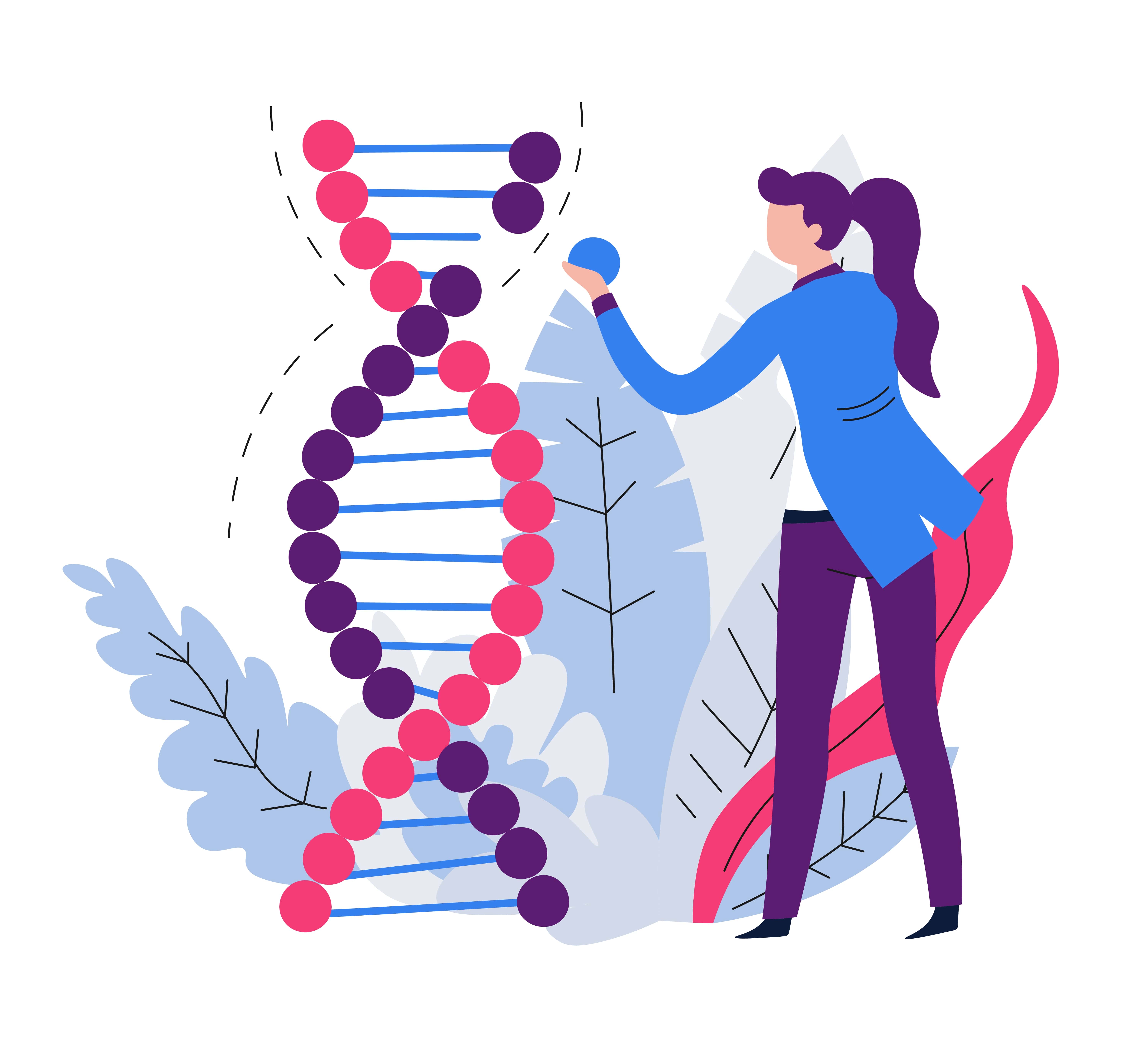
Genes exist throughout our body and play an important role in determining our appearance, development, behavior, and in ways, our survival. Genes, inherited from our parents, affect many factors, both visible and invisible. They decide our hair color, eye color, height, and whether we end up with freckles or dimples, but they also determine what diseases we are born with or may be at increased for developing. Genes can acquire alterations or mutations which cause cells to avert normal behavior and therefore may led to illnesses and diseases, including cancer. For example, some breast and ovarian cancer cases are linked to a genetic predisposition or a hereditary factor that is passed down through family genes.
Significant advances have been made in the management and treatment of patients who carry or may be carriers of mutated genes; however, there is still much to learn. Below, Summit Health Gynecologic Oncologist, Terri Febbraro, MD, MPH, FACOG, breaks down what there is to know and shares some fast facts that dive a little deeper into the critical gene-cancer connection.
Fast Facts with Dr. Terri Febbraro
Fast Fact #1: Genetic mutations can be found in a woman’s germline or inherited DNA or in the tumor itself.
We inherit our genes in pairs – one copy from our mother and one from our father. When a change in a gene is present in the germ cells (eggs and sperm), it is called a germline mutation. This type of mutation is considered hereditary because it is passed down from a parent. Hereditary mutations are present in all cells from birth. These genes increase the risk for developing cancer down the line. Some gene mutations do not occur at birth. An acquired (or somatic) mutation may occur at any time during a person’s life. This type of mutation is present only in tumor and not in every cell. It is not hereditary.
Fast Fact #2: The field of genetics is rapidly developing with identification of new genes and new treatments.
The science of genetics has advanced significantly over the past ten years and we now have a much greater understanding of genes and their connection to disease. Through genetic testing that can identify existing mutations, we can determine an individual’s risk or predisposition for cancer. These test results can play a major role in guiding a surveillance strategy, prophylactic treatment as well as a patient’s course of treatment and future medical care.
Fast Fact #3: Targeted therapies such as PARP inhibitors or pembrolizumab, offer promising treatment options beyond standard chemotherapy.
In far too many gynecologic cancer cases, specifically ovarian cancer, diagnosis comes at a late stage, which makes the prognosis for long-term survival via traditional treatments, bleak. Advances in cancer biology and drug development have led to targeted treatments that can attack mutations or changes in genes specific to an individual’s cancer.
The most recent class of drugs that have shown to be effective in the treatment of ovarian cancer are poly (ADP-ribose) polymerase or (PARP) inhibitors. PARP inhibitors interfere with the function of proteins involved in the repair of DNA, causing cancer cells to die. These drugs are especially effective in women who have BRCA1 or BRCA2 mutations which increase the risk of female breast and ovarian cancers. The FDA approval of poly (ADP-ribose) polymerase (PARP) inhibitors has helped to significantly increase the options for women dealing with gynecologic malignancies. PARP can be used as a standalone agent or in combination with other treatments such as chemotherapy.
Fast Fact #4: Prophylactic surgery to remove the ovaries and tubes for women at high risk for developing ovarian cancer can reduce the risk by over 80 percent.
Preventive surgery to remove the ovaries may be an option for women who are at high risk of contracting ovarian and breast cancer. Typically, women with high hereditary risk for ovarian cancer also have an increased risk for fallopian tube cancer.
Fast Fact #5: Even with all these advances in treatments, prevention and early detection is key.
Although we can’t necessarily prevent hereditary diseases, genetic testing can determine if someone has a genetic risk for a specific disease like cancer and those results can help us better diagnose conditions and allow us to put specialized preventive measures into place to lower that risk. Testing may be advised if:
- You have a strong family history of certain types of cancer.
- You have already been diagnosed with cancer. Testing may show if you have a higher risk of additional cancers. It can also help your family members decide if they want to be tested for the same mutation.
- You have a family member who has an inherited gene mutation that increases cancer risk.
Discuss with your health care provider if genetic counseling and testing is right for you based on your family or personal history of cancer.
